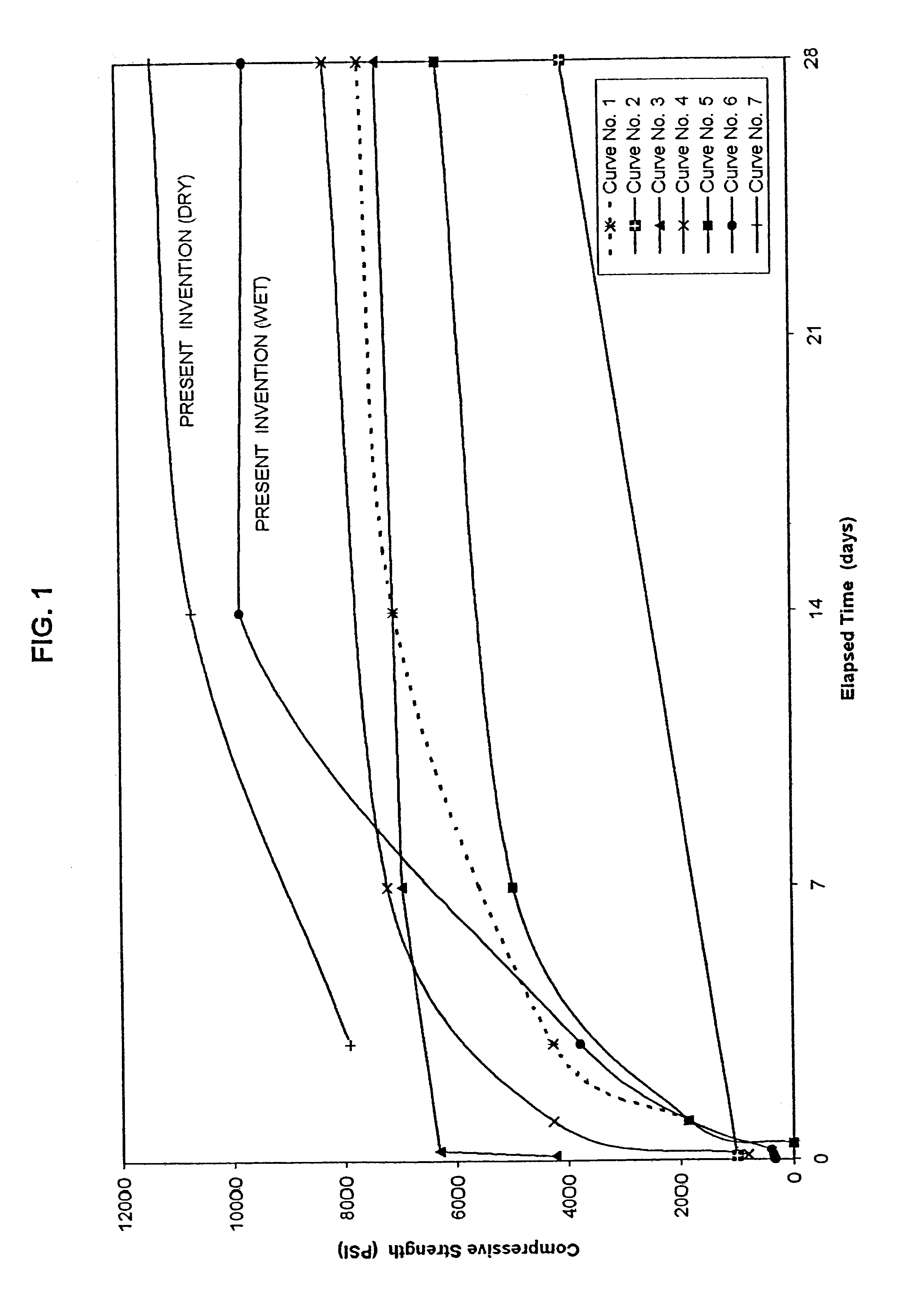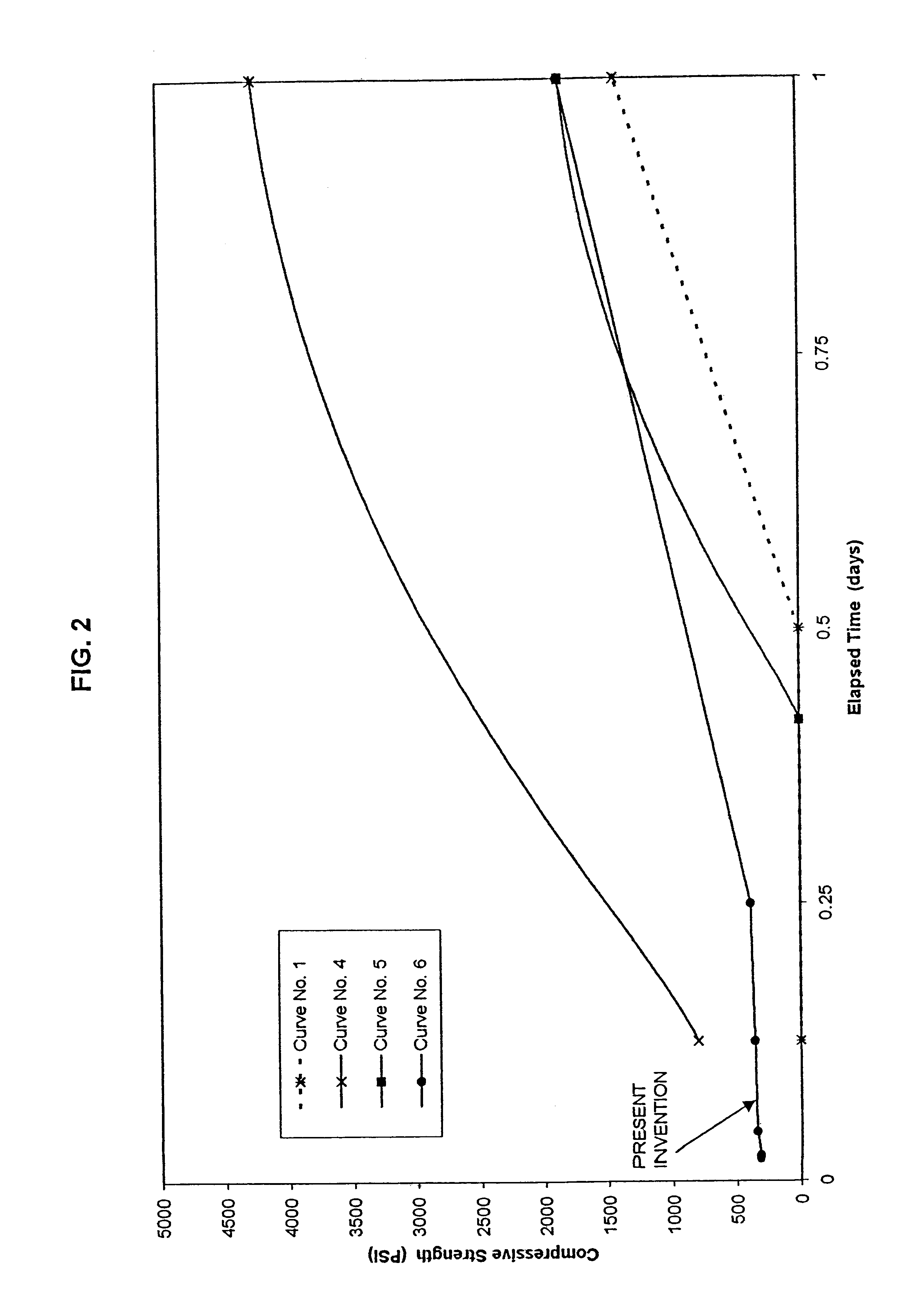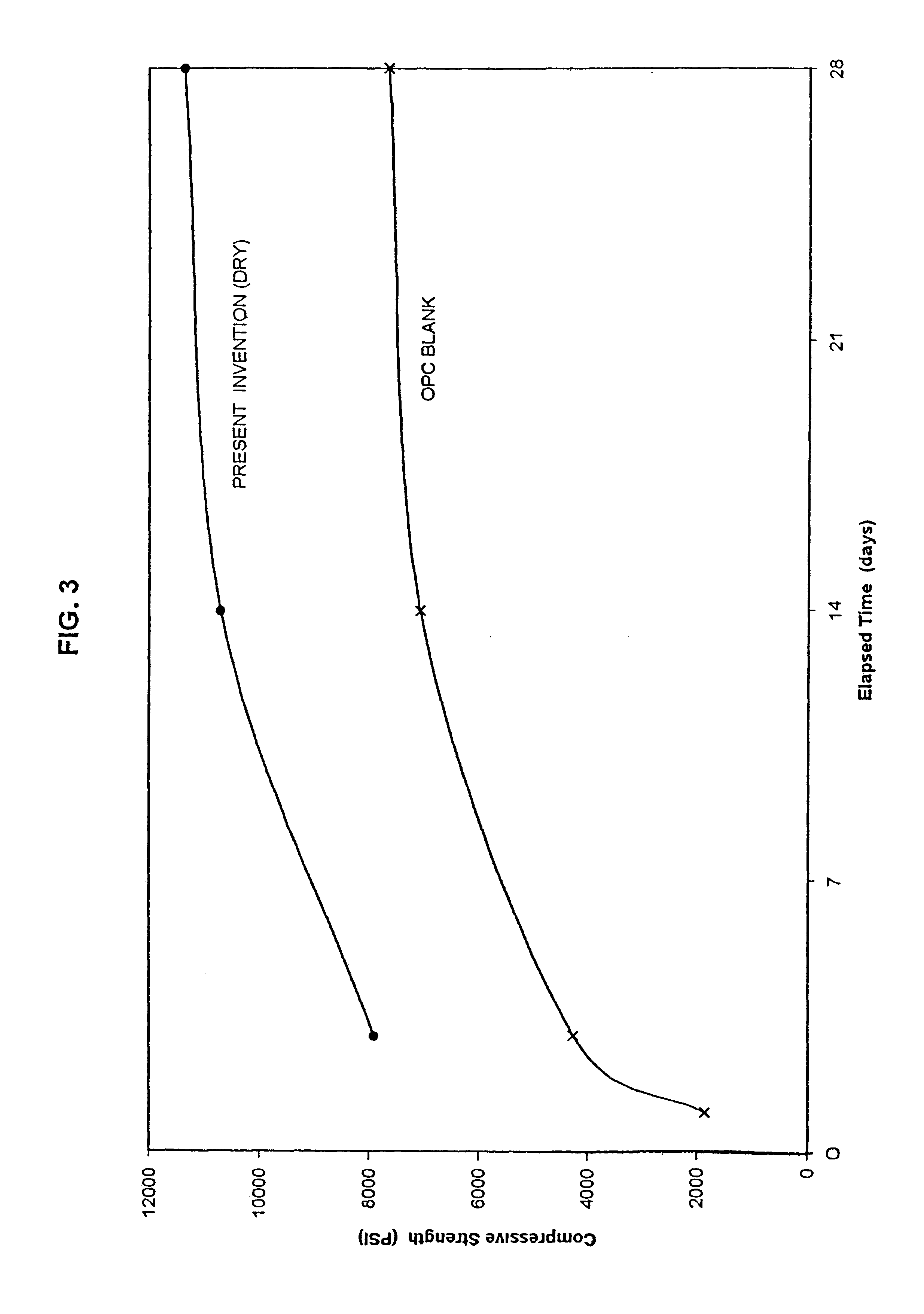Gypsum-rich Portland cement
a technology of gypsum and portland cement, which is applied in the direction of climate sustainability, solid waste management, sustainable waste treatment, etc., can solve the problems of poor water resistance of materials, low early strength, and high shrinkage on drying
- Summary
- Abstract
- Description
- Claims
- Application Information
AI Technical Summary
Problems solved by technology
Method used
Image
Examples
example 2
An exemplary composition according to the present invention is given in Table 11. The composition of the binder is identical to that of Example 1; the calcium carbonate filler used in Example 1 was replaced with a fine silica sand. The dry components were mixed thoroughly to obtain a homogeneous blend. The dry blend, weighing 600 grams, was mixed with 147 ml. of water for 3 minutes in a HOBART mixer. The cementitious mixture was poured into a 40.times.40.times.160 mm mold and was cured in a plastic bag for 28 days. The wet compressive strength of the cementitious mixture, over time, is presented in Table 12.
TABLE 12
example 3
An exemplary composition according to the present invention is provided in Table 13, and tested according to standard procedure EN-196-1.
The dry components were mixed thoroughly to obtain a homogeneous blend. The dry blend, weighing 1800 grams, was mixed with 900 ml. of water for 3 minutes in a HOBART mixer. The cementitious mixture was poured into a 40.times.40.times.160 mm mold and was cured in a plastic bag for 28 days. Both the wet and dry compressive strengths of the cementitious mixture, over time, are presented in Table 14. The compressive strength of an ordinary OPC mixture is provided for comparative purposes.
It is clearly evident from Table 14 that the cementitious mixture according to the present invention is fast-setting relative to the reference composition, and also demonstrates superior compressive strength after the first 7-14 days.
In addition to the enhanced physical properties described above, the use of calcined gypsum as a major component of the binder gives the ...
PUM
| Property | Measurement | Unit |
|---|---|---|
| Time | aaaaa | aaaaa |
| Time | aaaaa | aaaaa |
| Percent by mass | aaaaa | aaaaa |
Abstract
Description
Claims
Application Information
 Login to View More
Login to View More - R&D
- Intellectual Property
- Life Sciences
- Materials
- Tech Scout
- Unparalleled Data Quality
- Higher Quality Content
- 60% Fewer Hallucinations
Browse by: Latest US Patents, China's latest patents, Technical Efficacy Thesaurus, Application Domain, Technology Topic, Popular Technical Reports.
© 2025 PatSnap. All rights reserved.Legal|Privacy policy|Modern Slavery Act Transparency Statement|Sitemap|About US| Contact US: help@patsnap.com



